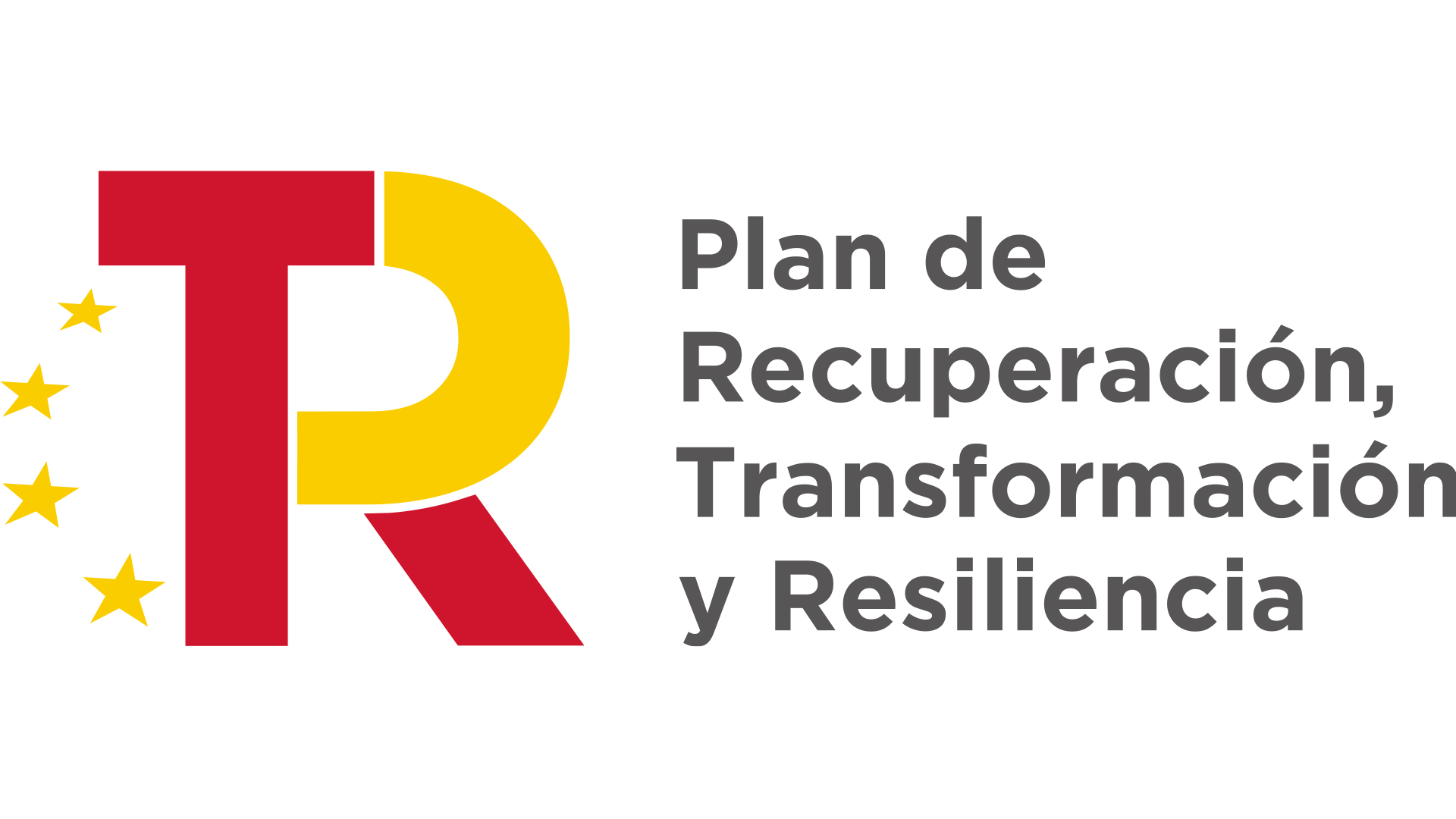The mexican alebrijes They are fantastic figures hand painted, carved in wood or made of paper and cardboard. They are known for their imaginative shapes and bright, vibrant colors, usually representing mixtures of different animals and imaginary beings. Each alebrije is unique, since it is made and hand-painted by Mexican artisans, which makes them totally original pieces of art and therefore very valuable.
Since their appearance in the 1930s, they have become an important part of Mexican popular culture and their popularity has spread throughout the world. They have been recognized as Intangible Cultural Heritage of Humanity by UNESCO since 2021. This means that they are considered a form of art and culture that is important to global heritage and must be protected and promoted.
Origin and development of Mexican alebrijes
The origin of Mexican alebrijes dates back to 1936, when the judas and piñata craftsman Pedro Linares began to make figures of imaginary animals with the technique of traditional Mexican cardboard. According to the story, Linares became seriously ill in his youth and, while he was in bed in a feverish state, he immersed himself in a world full of strange and colorful animals that shouted the word “alebrijes.” This experience inspired him to create these figures with the technique he worked with, and which, today, have become a symbol of Mexican creativity and imagination.
Over time, Linares' technique spread throughout Mexico, and many other artists and craftsmen began to create their own versions of alebrijes, fusing tradition and innovation. They appear in movies, television shows, and popular music. They have influenced contemporary art in Mexico and around the world. Pedro Linares received the 1990 National Prize for Sciences and Arts for his great artistic career.
Many artists have used the alebrijes technique in their own works of art, creating pieces that fuse tradition and innovation. Since their origins, they had the admiration and support of renowned artists such as Diego Rivera and Frida Kahlo. Other international artists have also been influenced by Mexican alebrijes, such as the famous American artist Alexander Calder, who created a series of sculptures in the 1960s that resemble alebrijes and which he called “beasts.”
In cinema they have appeared in several of the films of Mexican director Guillermo del Toro, who in 2006 presented a collection at the Museum of Popular Art in Mexico City. The exhibition included hundreds of alebrijes from all over the country and became one of the most popular exhibits in the museum's history. Also in the movie Coco made by Pixar (Disney) they have a leading role in several scenes.
They have transcended the field of crafts, they are considered artistic works with their space in museums and galleries, the Museum of Popular Art of Oaxaca holds the Parade of monumental alebrijes every year, known as Night of the Alebrijes.
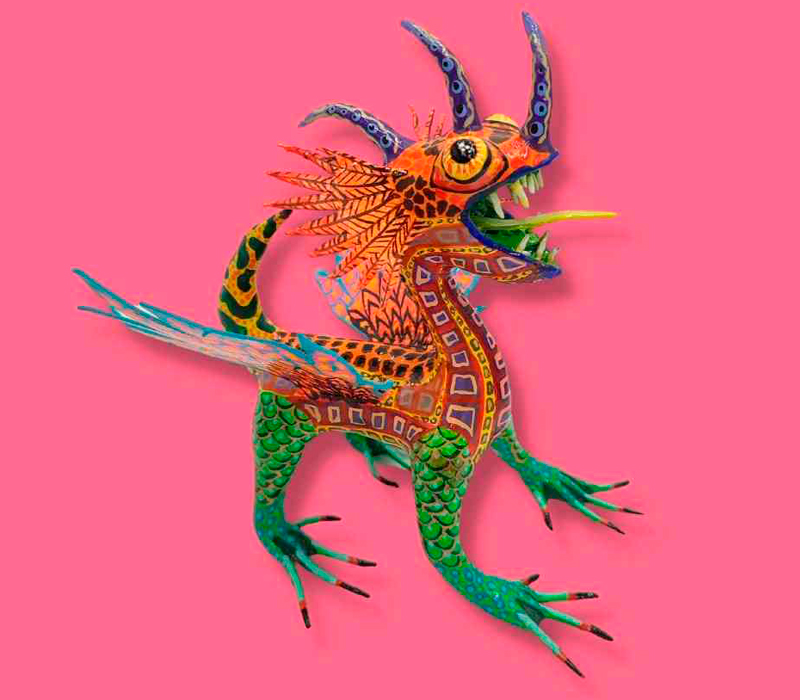
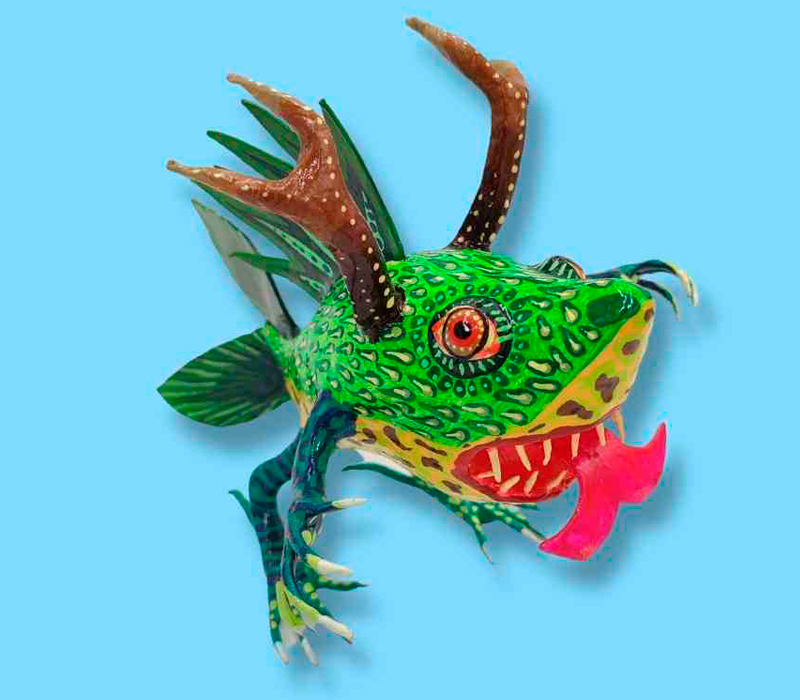

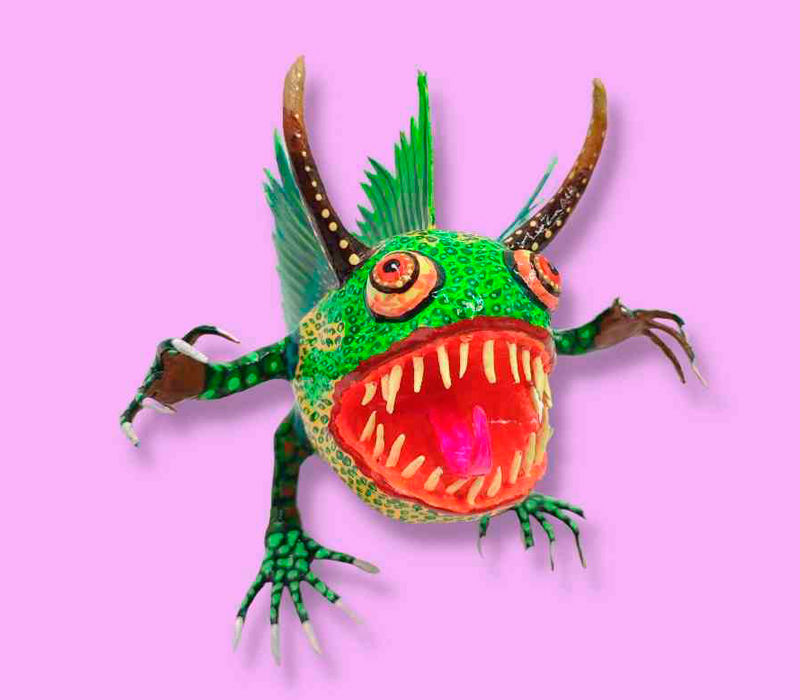
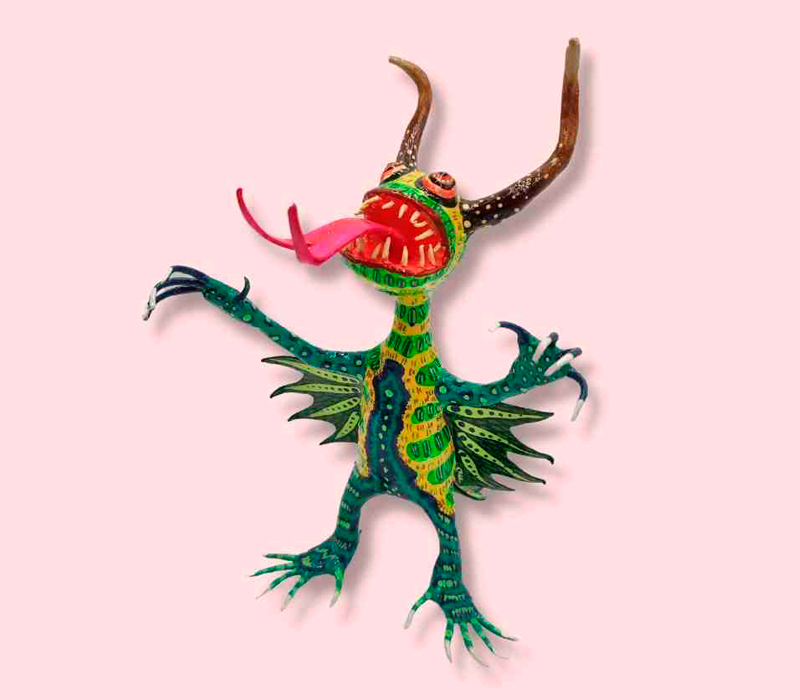
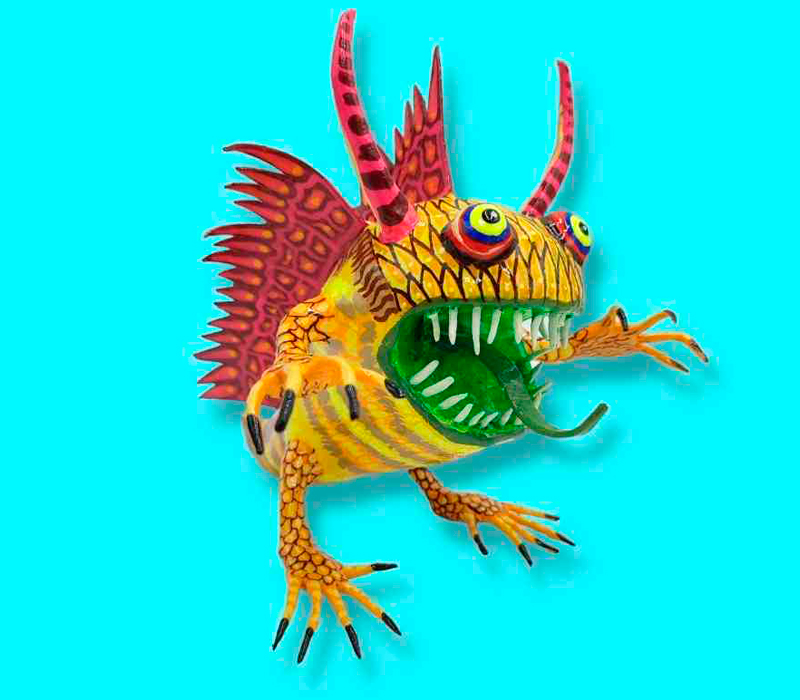
The legacy of alebrijes in Mexican crafts and culture
Mexican alebrijes have left a lasting legacy in both crafts and Mexican culture, they have become a symbol in the imagination of this country.
They are used in many celebrations and events as decoration at weddings and other important events in a person's life.
They are not only used as decoration or as works of art. They also have spiritual meaning for many people in Mexico. It is believed that each one has its own energy and personality, some people use them as beings that protect dreams and good luck since they supposedly helped Linares heal from his illness, or as tools for meditation.
Alebrijes are one of the pieces that you can find in our Mexican crafts store in Madrid. You can see some of the ones we currently have at our online store or you can also come visit us at our physical store, we are on López de Vega Street, 3. We will love to serve you and share with you our passion for alebrijes and Mexican crafts. If we don't have what you are looking for, tell us and we will try to find it for you. We will wait for you.
We also teach a permanent workshop where you will learn from scratch how to make and create one with your own hands. Find information through networks and the website.
